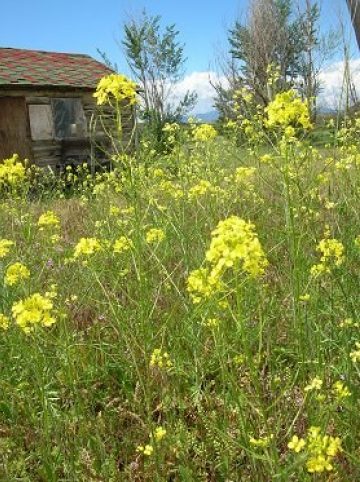This Weed Guide is designed to help you identify the worst of our area’s invasive weeds, and take steps to prevent, control and reduce them on whatever piece of the Methow you care for and want to steward.
Weeds. Some people say they are the single biggest threat to existing shrub-steppe habitat and successful land restoration. But what is a “weed” anyway? A simple answer might be “any plant that is growing where it’s not wanted.” Does that mean it’s bad? Not necessarily, in fact many weeds are edible, used medicinally and/or are sought after plants by native pollinators and honey bees. Additionally, some truly native plants can behave in a “weedy” manner. So, what’s the big fuss? The real issue is with “noxious” or “invasive” weeds, and we’ll use both terms synonymously in this weed guide. “Noxious weed” is the formal, legal term for invasive, non-native plants that are so aggressive and difficult to control that they harm our local ecosystems or disrupt agricultural production. These plants can out-compete native plants for sunlight, nutrients, and space; reduce habitat for wild and domestic animals; spoil rangelands and decrease agricultural production; poison animals; increase wild-fire risk; and reduce
recreational, scenic and property values. So while some weeds (and even natives) may be annoying (or “obnoxious”), noxious weeds are a genuine threat to our natural resources, ecology, scenery and even economy, and in many cases landowners are required under state law to control certain noxious weeds on their own property.
Click on a weed “card” below to learn more about a specific weed, and see the links on the right for more help, including local videos, a quick guide to common weeds, the weed control toolbox and more.



